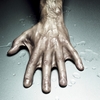Zinc metal reacts with hydrochloric acid, according to the chemical equation below.
Zn (s) + 2 HCl (aq) → ZnCl2 (aq) + H2 (g)
Tina added 0.146 mole of hydrochloric acid solution to 0.135 mole of zinc in a beaker and waited several minutes for the reaction to complete. Which of the following best describes the reaction that Tina performed?
A
HCl was the limiting reagent, and 0.0675 mole of ZnCl2 was produced.
B
HCl was the limiting reagent, and 0.0730 mole of ZnCl2 was produced.
C
Zn was the limiting reagent, and 0.135 mole of ZnCl2 was produced.
D
Zn was the limiting reagent, and 0.0730 mole of ZnCl2 was produced.
Answers (2)
Know the Answer?
Not Sure About the Answer?
Find an answer to your question 👍 “Zinc metal reacts with hydrochloric acid, according to the chemical equation below. Zn (s) + 2 HCl (aq) → ZnCl2 (aq) + H2 (g) Tina added ...” in 📗 Chemistry if the answers seem to be not correct or there’s no answer. Try a smart search to find answers to similar questions.
Search for Other Answers
You Might be Interested in
Describe the difference between a monoprotic acid and a triprotic acid. How does a triprotic acid generate hydrogen ions?
Answers (1)
Which of these pairs would form an ionic bond?
Answers (1)
Difference between silicon and sulphur
Answers (1)
For the diagram shown, which angles are adjacent supplementary angles? ∠1 and ∠5 ∠4 and ∠2 ∠8 and ∠7 ∠3 and ∠6
Answers (1)
Transition metals, like copper, are found in many types of biological molecules where it is common for metals to have deviations from ideal bond angles.
Answers (1)
New Questions in Chemistry
Think about a neutral magnesium atom. Then think of a magnesium ion with a 2+charge. How are these two alike? How are they different? Be sure to use the terms proton, neutron, and electron in your answer.
Answers (1)
What subatomic particle is specifically responsible for combining the atoms together to form a new substance?
Answers (1)
A chemist reported that 100 gallons of a gas were available in a laboratory. Which property of the gas did the chemist report?
Answers (2)
Is the water density higher than the aluminum density
Answers (1)
How many moles of molecular oxygen (o2) are consumed in the complete combustion of one mole of pentane (c5h12) ?
Answers (1)

